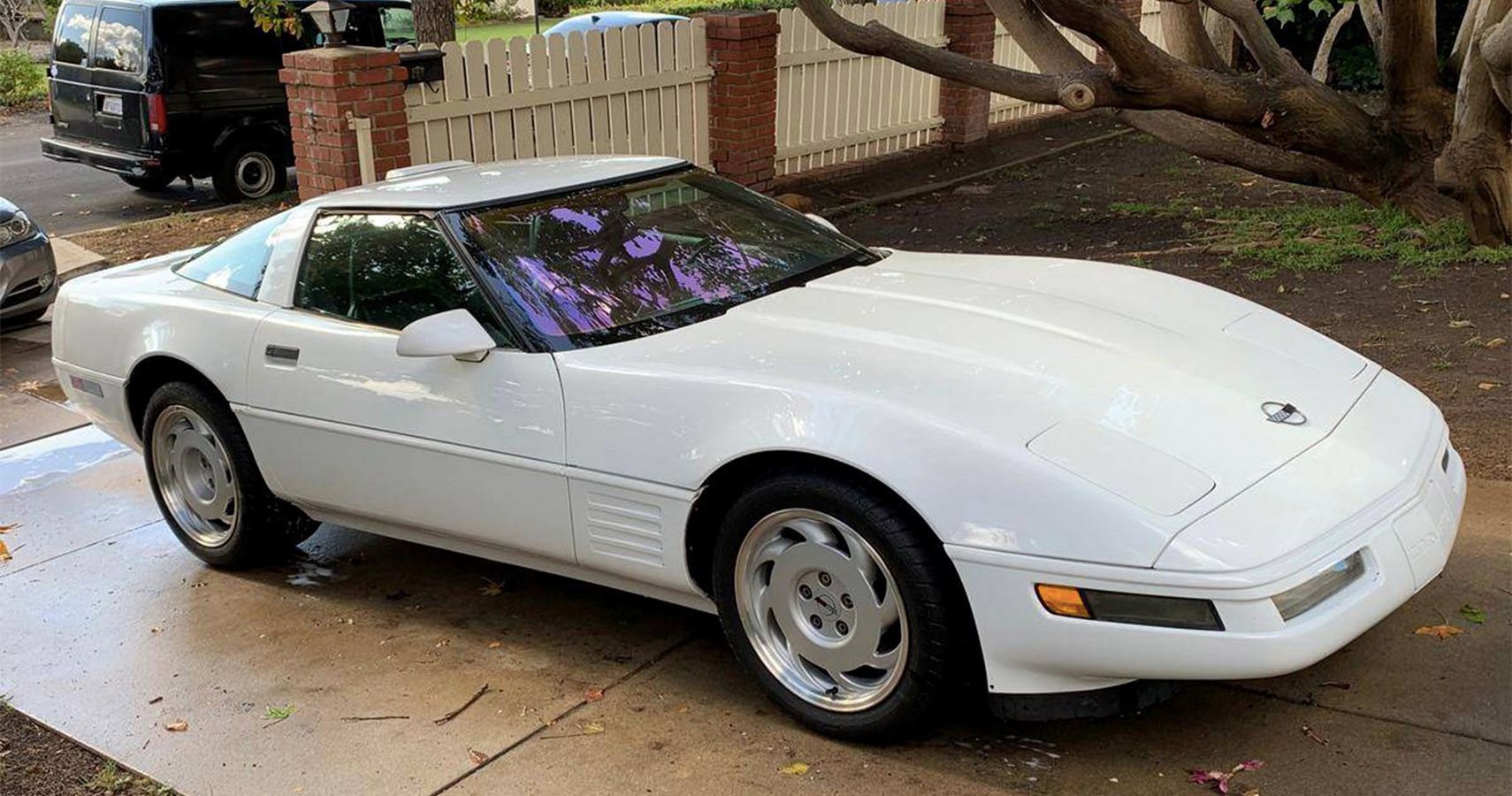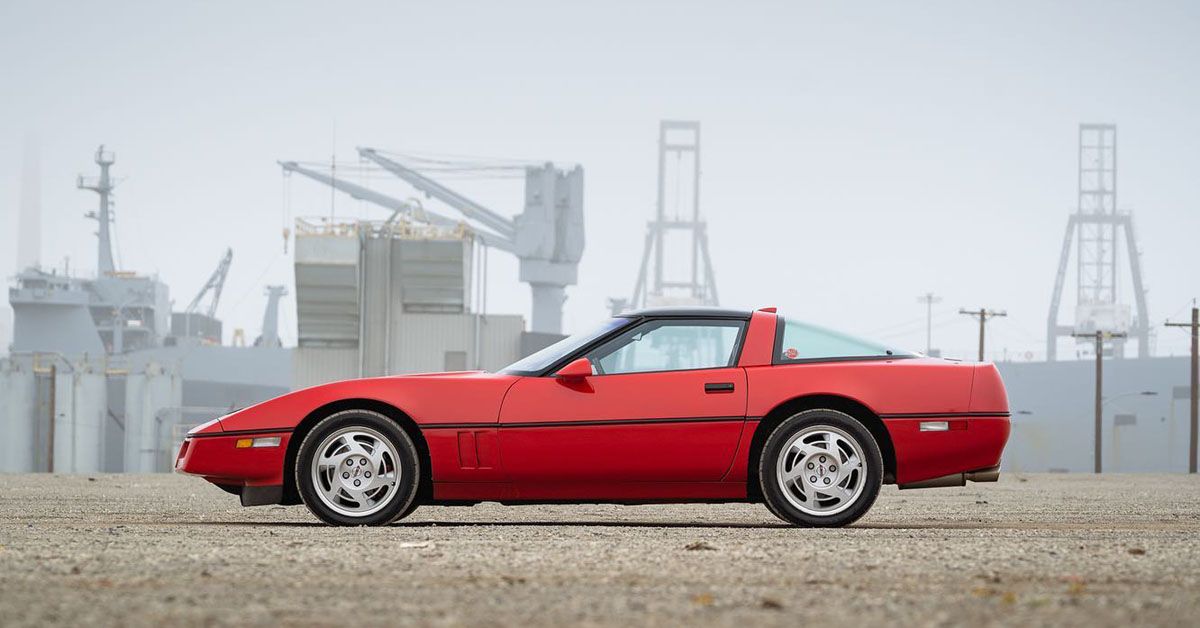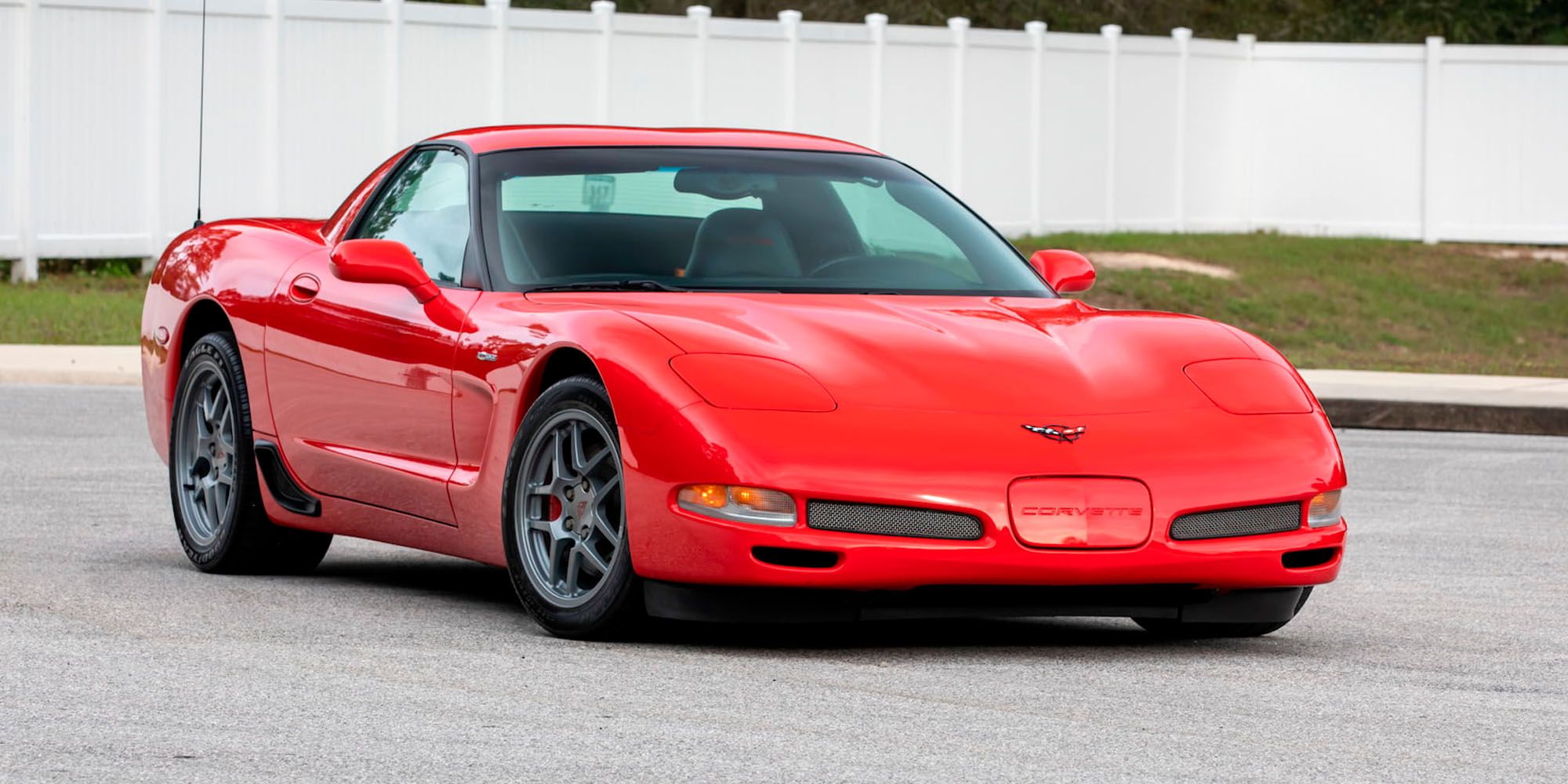For the fourth-generation Corvette (1984-1996), Chevrolet completely overhauled ‘America’s sports car’ to make it lighter, faster, better handling and an all-round huge leap forward from its predecessor.
The Chevrolet Corvette ZR-1 (1990-1995) sought to take the C4 Corvette even further. GM enlisted Lotus’ help to come up with a new aluminum block, DOHC 5.7-liter V8 called the LT5 with 375 HP making it the most powerful ‘Vette ever. Lotus also helped with the adjustable active suspension package, steering and brakes. It was also the most expensive Corvette ever, priced at $58,995 when new. That’s $178,000 in today’s money, adjusting for inflation. Any way you cut it, that’s a lot of money for a Corvette!
Unfortunately these C4 ‘Vettes don’t seem to have stood the test of time too well, especially in terms of holding their values. Regular models can be had anywhere from $10,000 to $25,000 for low mileage manual-equipped cars.
While that means they’re a good option for someone looking for a classic V8 Corvette on the cheap, they’re definitely bad news for collectors. Even the ultra-rare “most expensive” ZR-1 can’t seem to redeem itself. A few years back a brand-new, dealer-owned Corvette ZR-1 sold for only $40,000, showing that prices haven’t appreciated. At all.
We take a deep dive into why the C4 Corvette ZR-1 will likely prove to be a terrible investment as a collector, despite being the ultimate ‘Vette of its time.
The C4 ZR-1 Doesn’t Look Very Different From A Base Model
The C4 Corvette was definitely an improvement over its predecessor, in every department, especially considering the C3 was essentially a face lifted C2 Corvette. The C4 was the first time Chevy used a uni-body construction in the Corvette’s history. It was also the first car that GM had ever tested in the wind tunnel, making it the most aerodynamic ‘Vette ever.
Unfortunately, the most expensive version of the C4, the ZR-1, looked pretty much exactly the same as the base model cars. Everything from the bumpers, to hood, to fenders stayed unchanged. Though the ZR-1 is about 4-inches wider than the base cars, it’s only the model-specific doors and rear end body panels that give it away. Even then, it’s subtle difference that not too many people can be expected to catch. That said, any base model owner could slap on ZR-1 badges and get away with it.
Fourth-Gen Corvette Prices Haven’t Hit Rock Bottom Yet
Though prices on C4 Corvettes have been lower than they are now, it does seem like values aren’t really appreciating. This is likely because there’s just so many fourth-gen Corvettes still around in the used market. It’s only exceptionally original, low-mileage cars that seem to hold any sort of value for the seller.
Usually with classic sports cars, we see a period when prices hit rock bottom, before they start to appreciate in value, before holding steady, and best case, exploding. It’s happened in the case of the Lamborghini Countach, back when the car was considered too much trouble for what it was worth. And we all know how that played out.
Even in the case of a mint-condition ZR-1 with basically no miles on the clock, the owner can’t expect to recover what was paid for it when new in 1991. And that’s a shame. Especially when cars like these weren’t driven, because the owners thought they were making an investment and holding the value of the car by keeping them in storage instead of driving them. What’s worse is that they’re fewer garages that are willing to work on the C4 Corvette, further scaring away potential buyers from the most expensive Corvette of the early 90s.
The Fifth-Gen Corvette Is Better In Every Way
However, we think the real reason that the C4 Corvette ZR-1 could prove to be a terrible investment is because the next generation of the Corvette really was an even bigger improvement. Much larger a jump than from C3 to C4, the shift to the C5 ‘Vette in 1997 was groundbreaking.
For starters, the C5 Corvette debuted a new hydro formed box frame chassis that offered several improvements in the way of rigidity, NVH and comfort. The C5 also debuted the LS (Luxury Sport) engine as part of the Corvette lineup’s revamp. The LS1 small-block V8 started at 345 HP and even gave birth to other lines of engines, for trucks, sedans and other applications.
Ironically, it’s the work that Chevy-owned Lotus put into the ZR-1’s brilliant engine that spurred GM’s own engineers into developing the LS-series of engines. The thinking being that they couldn’t be outshone by Lotus.
Then consider that the top dog of the C5 Corvette range, the Z06, can be had cheaper, and is faster than the ZR-1, with all the benefits that an additional 10 years of engineering advancements bring with it. The C4 Corvette ZR-1 too easily gets relegated to the place of being a car for collectors. Unfortunately for it, collectors don’t seem to be interested. At least not yet.



